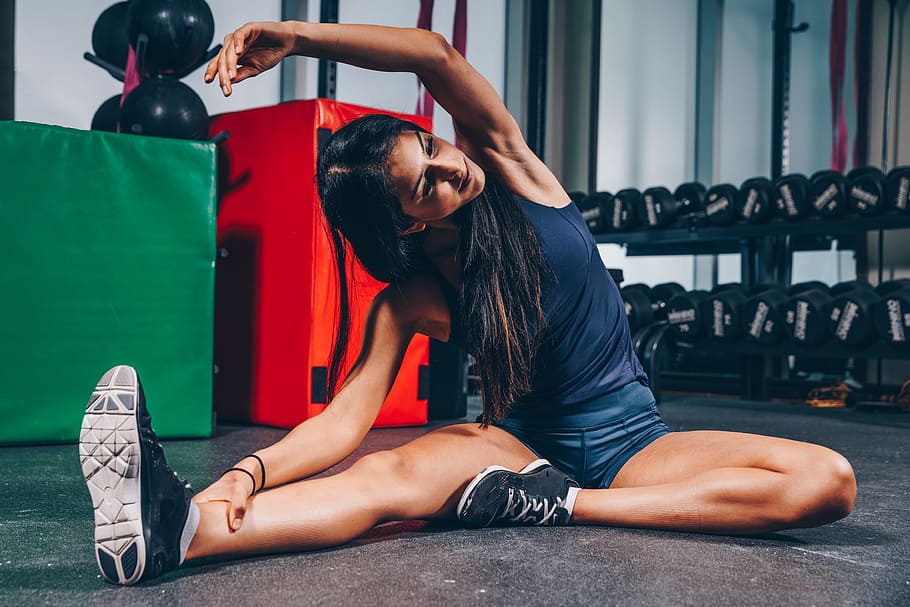Proper form and technique are essential in fitness for several reasons. Whether you’re lifting weights, performing bodyweight exercises, or engaging in cardiovascular activities, using correct form is crucial for maximizing results, preventing injuries, and promoting long-term progress. Here are some key reasons why proper form and technique are important in fitness:

“Form follows function. Doing the exercises with great form will yield better results than simply trying to lift heavier weights.” – Arnold Schwarzenegger
When it comes to working out quality is more important than quantity. How you lift and how you run, jump or stroke may mean the difference between going harder and getting sidelined. Beginners should expect to devote time to learning proper form. Even the more experienced can benefit from some occasional form feedback. Perfecting form will boost performance, conserve energy and reduce injuries over time
Injury prevention
When you use improper form or technique, you increase the risk of injuries. Proper form helps maintain the body’s alignment, stability, and balance, reducing stress on joints, muscles, and connective tissues. By moving correctly, you can avoid strains, sprains, muscle imbalances, and other common fitness-related injuries.

Injury prevention is a critical aspect of exercise, and proper form plays a significant role in minimizing the risk of injuries. Here’s some information about injury prevention in exercise and why form is important.
- Proper form helps maintain alignment and joint stability.
- It ensures appropriate muscle activation and prevents imbalances.
- Correct technique supports spinal health and reduces the risk of spinal injuries.
- Proper form helps manage load and prevents overloading injuries.
- Efficient movement patterns reduce stress on joints and muscles.
- Mind-muscle connection improves body awareness and reduces injury risk.
- Prioritizing form allows for long-term sustainability and progress.
- Proper technique minimizes the risk of acute injuries such as sprains or dislocations.
- It reduces the likelihood of overuse injuries through efficient movement.
- Correct form promotes consistent and safe exercise habits.
Efficient muscle engagement
Correct form ensures that the targeted muscles are effectively engaged during exercises. By performing movements with proper alignment and activation, you can optimize muscle recruitment, allowing you to get the most out of your workouts. This leads to better muscle development, strength gains, and overall performance improvements.

- Develop a strong mind-muscle connection by focusing your attention on the targeted muscle.
- Use proper form and technique to ensure optimal muscle activation.
- Perform exercises with controlled and deliberate movements.
- Incorporate a full range of motion for each exercise, when appropriate.
- Vary exercise tempos to challenge the muscles in different ways.
- Engage the core muscles to stabilize the body during exercises.
- Gradually increase resistance or intensity to promote progressive overload.
- Utilize compound exercises that involve multiple muscle groups for efficient muscle engagement.
- Include isolation exercises to specifically target and isolate individual muscles.
- Listen to your body and adjust intensity or form as needed to prevent overexertion or injury.
By implementing these pointers, you can optimize muscle engagement,
Targeting specific muscle groups
Targeting specific muscle groups: Many exercises are designed to target specific muscle groups. Proper form and technique help isolate and activate the intended muscles, ensuring they receive the appropriate stimulus for growth and development. By using incorrect form, you may inadvertently shift the emphasis to other muscles, reducing the effectiveness of the exercise.

Here are some concise pointers on targeting specific muscle groups during exercise:
- Understand the anatomy and function of the muscle group you want to target.
- Choose exercises that specifically isolate and engage the desired muscle group.
- Focus on proper form and execute exercises through their full range of motion.
- Develop a strong mind-muscle connection by consciously engaging and visualizing the targeted muscle during the exercise.
- Incorporate variations and progressions of exercises to continually challenge the muscle group.
- Control the tempo of your movements to increase time under tension for the targeted muscles.
- Consider balancing agonist and antagonist muscle groups for optimal muscle development and joint stability.
- Seek guidance from a qualified fitness professional if you need assistance in targeting specific muscle groups.
Remember, consistency and proper execution of exercises are key to effectively target and develop specific muscle groups.
Hones your Focus
“Honing your focus in exercise refers to the act of sharpening and directing your attention towards the present moment during physical activity. It involves eliminating distractions, staying mindful of your movements, and maintaining a concentrated mindset. By honing your focus, you enhance your mental engagement, improve technique, and maximize the benefits of your workout.”

Here are concise pointers to help hone your focus during exercise:
- Set clear goals to give your workouts purpose and direction.
- Establish a consistent exercise routine to make it a habit.
- Minimize distractions and create a dedicated workout environment.
- Practice mindful breathing to center your focus and calm your mind.
- Visualize success and mentally rehearse achieving your fitness goals.
- Stay present in the moment and focus on the sensations of your body.
- Use cues or mental prompts to maintain focus on proper form and technique.
- Engage in mindful movement by paying attention to muscle activation and alignment.
- Cultivate positive self-talk to boost confidence and motivation.
- Find an accountability partner or support system to stay committed and motivated.
By incorporating these pointers, you can improve your focus, mental clarity, and overall workout experience.
Supports oxygen flow
Proper form supporting oxygen flow during exercise means adopting the correct alignment, posture, and technique while engaging in physical activity. It is about positioning your body in a way that allows for efficient breathing and optimal delivery of oxygen throughout the body. When you maintain proper form, you ensure that your airways remain open and unrestricted, enabling a smooth flow of air into your lungs.

To support oxygen flow, it’s important to engage your diaphragm, the primary muscle responsible for breathing, fully. By doing so, you allow for deep and efficient inhalation and exhalation. Imagine taking deep, satisfying breaths that fill your lungs to capacity, ensuring an ample supply of oxygen and effective removal of carbon dioxide.
- Maintain proper posture and alignment to keep the airways open and unrestricted.
- Optimize breathing mechanics by engaging the diaphragm and practicing deep inhalation and exhalation.
- Focus on chest expansion during inhalation to create more space for the lungs to take in oxygen.
- Promote efficient cardiovascular function by practicing proper form in cardiovascular exercises.
- Ensure proper muscle activation to support oxygen utilization within the working muscles.
- Avoid energy wastage by moving efficiently and with proper alignment.
- Sustain endurance and stamina by maintaining proper form to delay the onset of fatigue.
- Prevent restrictive breathing patterns by avoiding slouching or rounding the shoulders.
By incorporating these pointers into your exercise routine, you can optimize oxygen flow, enhance performance, and support overall respiratory function during exercise.
Consistency and patience
Developing proper form requires practice, consistency, and patience. Be mindful of your technique during workouts, and over time, it will become more natural and automatic. Stay focused, maintain good form, and gradually challenge yourself to improve.

- Establish a routine: Create a regular exercise schedule and stick to it. Consistency is key to seeing long-term results and reaping the benefits of exercise.
- Set realistic goals: Set achievable and realistic fitness goals that align with your abilities and lifestyle. Having clear goals can help you stay motivated and committed to your exercise routine.
- Start slow and progress gradually: Avoid pushing yourself too hard or expecting immediate results. Begin with manageable workouts and gradually increase the intensity, duration, or frequency of your exercises over time.
- Celebrate small victories: Acknowledge and celebrate the progress you make along the way. Whether it’s lifting a slightly heavier weight, running an extra minute, or mastering a new exercise technique, every small achievement is worth recognizing.
- Find activities you enjoy: Engage in exercises or activities that you genuinely enjoy. When you find something you love doing, it becomes easier to stay consistent and motivated.
- Mix it up: Incorporate variety into your exercise routine to keep things interesting. Try different types of workouts, classes, or sports to prevent boredom and maintain your enthusiasm for exercise.
- Track your progress: Keep a record of your workouts, including the exercises you perform, the weights or distances you achieve, and how you feel during and after each session. Tracking your progress can provide a sense of accomplishment and serve as a reminder of how far you’ve come.
- Stay patient: Results take time. Avoid getting discouraged if you don’t see immediate changes in your body or performance. Stay patient, trust the process, and focus on the long-term benefits of regular exercise.
- Listen to your body: Pay attention to your body’s signals and respect its limitations. Pushing through pain or exhaustion can lead to injuries. Rest when needed, modify exercises if necessary, and prioritize recovery and self-care.
- Seek support and accountability: Surround yourself with supportive individuals who share similar fitness goals or join fitness communities, classes, or groups. Having accountability partners can help you stay on track and motivated during times when your motivation might waver.
Progression and plateau prevention
Correct form sets a solid foundation for progression in your fitness journey. It allows you to gradually increase the intensity, load, or complexity of exercises while maintaining proper movement patterns. This progression prevents plateaus and facilitates continued improvement.

- Gradually increase the intensity, duration, or frequency of your workouts.
- Add more weight or resistance as you get stronger.
- Increase the number of repetitions or sets you perform.
- Try advanced variations or progressions of exercises.
- Incorporate interval training or high-intensity workouts.
- Focus on improving your technique and form.
- Keep a workout journal to track your progress.
- Periodically reassess your goals and adjust your training accordingly.
- Include regular rest and recovery periods to prevent overtraining.
- Seek guidance from a fitness professional for personalized progression strategies.
It Creates A Safer Workout
Proper form can prevent injuries and accidents in the gym and when performing everyday activities. Standing properly on a crowded bus, lifting a heavy box without back pain, or pushing your toddler’s stroller up a big hill will all come easier if you engage in the right technique. Of course, this is doubly important when engaging in a workout

A properly executed workout is a safe workout—anything else can lead to risks or injuries. This is especially true when it comes to lifting. Workouts like bench presses and deadlifts require the correct form at all times, as these types of workout put a fair amount of strain on your body. Your muscles and joints go through a lot when you lift, and if they aren’t properly aligned, it can set off a series of bodily events that lead to injury or discomfort.
Every type of workout has its own version of correct form and technique. Whenever you begin a new type of workout, we recommend you spend your first session mastering that form and technique before working toward your results-based goals.
Are There “Wrong” Workout Techniques?
Some things are always viewed as a “no-no,” whether in the swimming pool or the weight room.
- Not Warming Up or Cooling Down
Skipping your warm-up can cause injuries and discomfort during your routine, and abandoning your cooldown can mess with your recovery—which can lead to a less enjoyable workout down the line.
- Certain Eating Habits
When you hit the gym, you need to be fueled and hydrated. When you finish, help your muscles recover with a hit of protein.
- Staying Stuck
Sure, you can watch your favorite show while walking on a treadmill every day, but you won’t see loads of progress. Push yourself—it’s worth it.
- Unrealistic Expectations
You aren’t going to walk into the gym a shrimp and exit a bodybuilder. Progress takes time and realistic, incremental goal-setting. Otherwise, it’s too easy to get discouraged and give up.


